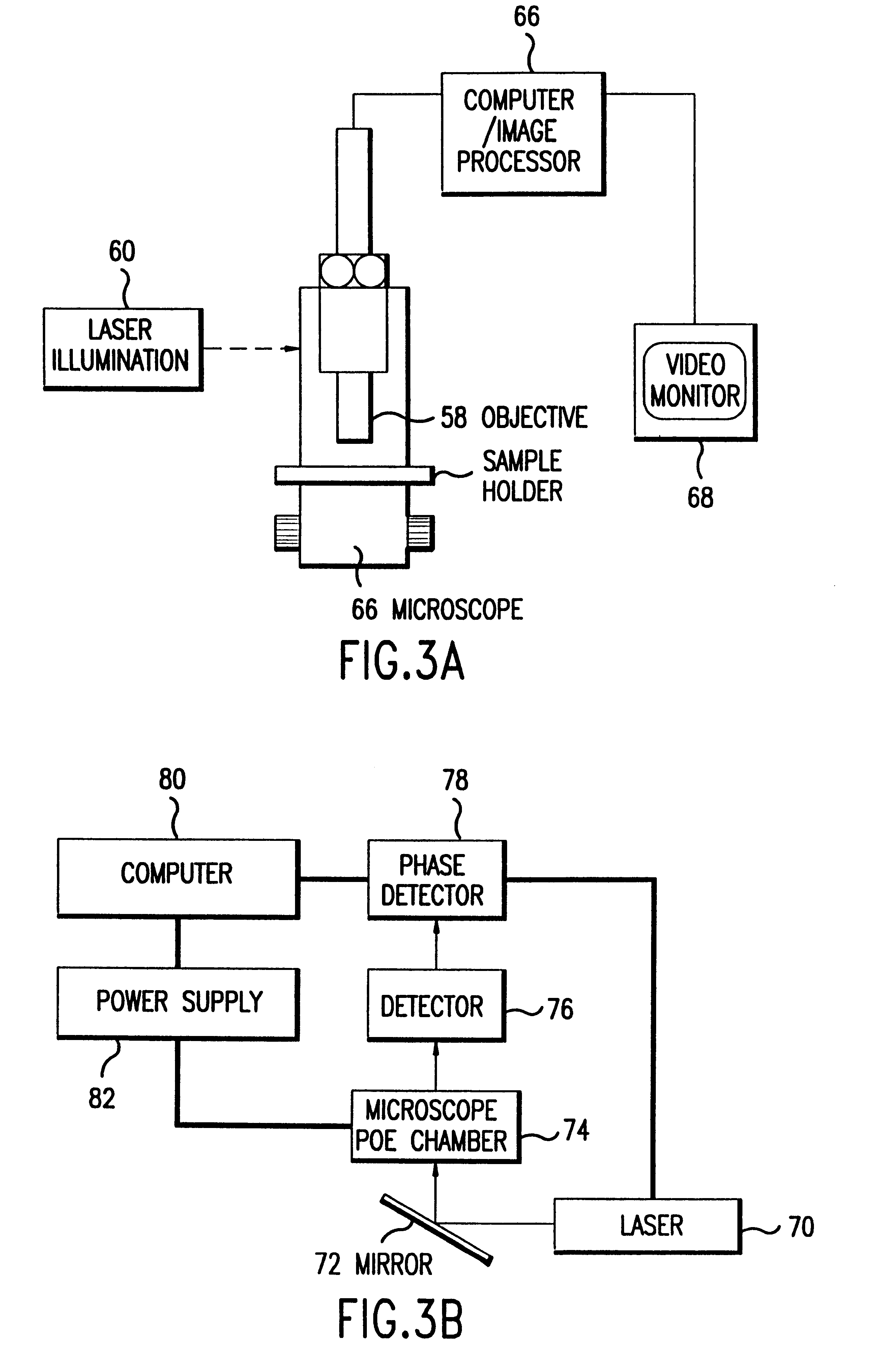Image processing and analysis of individual nucleic acid molecules
a nucleic acid molecule and image processing technology, applied in the field of individual nucleic acid molecules, can solve the problems of inability to obtain sufficient quantities of dna from these sources which are sufficient for detailed analyses, time-consuming and often impractical, and achieve high throughput , the effect of rapid generation of information
- Summary
- Abstract
- Description
- Claims
- Application Information
AI Technical Summary
Benefits of technology
Problems solved by technology
Method used
Image
Examples
second embodiment
In the present invention, the spotted glass surface is rehydrated, after which a teflon block stamp is pressed onto the DNA spots, causing them to spread and fix on the sticky, derivatized surface. Experimental results indicate that this approach is effective for elongating surface mounted DNA without significant breakage. FIG. 29 shows an enlarged view of a DNA spot and the use of a teflon block in accordance with this embodiment of the present invention to spread the molecules onto the derivatized surface.
In a third, preferred method of the present invention, the deposited droplets of DNA solution are simply let dry on the derivatized surface. Experiments show that as the droplets dry, most of the fixed DNA remains fully elongated, aligned, and primarily deposited within the spot peripheries in a characteristic "sunburst" pattern, clearly observable in FIGS. 26A, B and C. Addition of glycerol to the spotting solution results in well elongated DNA molecules which are more uniformly...
example 1
Preparing DNA for Microscopy
G bacteria was grown as described by Fangman, W. L., Nucl. Acids Res., 5, 653-665 (1978), and DNA was prepared by lysing the intact virus in 1 / 2.times.TBE buffer (1.times.: 85 mM Trizma Base (Sigma Chemical Co., St. Louis Mo.), 89 mM boric acid and 2.5 mM disodium EDTA) followed by ethanol precipitation; this step did not shear the DNA as judged by pulsed electrophoresis and microscopic analysis.
DNA solutions (0.1 microgram / microliter in 1 / 2.times.TBE) were diluted (approximately 0.1-0.2 nanogram / al agarose) with 1.0% low gelling temperature agarose (Sea Plague, FMC Corp., Rockport Me.) in 1 / 2.times.TBE, 0.3 micrograms / ml DAPI (Sigma Chemical Co.), 1.0% 2-mercaptoethanol and held at 650.degree. C. All materials except the DNA were passed through a 0.2 micron filter to reduce fluorescent debris. Any possible DNA melting due to experimental conditions was checked using pulsed electrophoresis analysis and found not to be a problem.
The sample of Example 1 was...
example 3
Perturbing Molecules in a Gel
The molecules of Example 2 were perturbed by POE. POE was accomplished by using a series of relatively short normal pulses of a chosen ratio and then after a longer time period, the polarity of one of the fields was switched. The switch time and normal field ratio are analogous to the pulsed electrophoresis variables of pulse time and field angle.
The nomenclature used to describe a POE experiment is as follows: 3,5-80 second pulses, 3 volts / cM). "3,5-80 seconds" means a 3 second pulse south-north, followed by a 5 second pulse east-west; after 80 seconds of this 3,5 second cycle, the polarity of the 5 second pulse is changed (west-east) for another 80 seconds, and a zig-zag staircase path is defined for the molecules involved. The pulse intensity was 3 volts / cM. In this Example, epifluorescence microscopy was coupled with the POE method to enable the general study of DNA conformational and positional changes during electrophoresis. While the POE method us...
PUM
| Property | Measurement | Unit |
|---|---|---|
| contour length | aaaaa | aaaaa |
| thickness | aaaaa | aaaaa |
| gelling temperature | aaaaa | aaaaa |
Abstract
Description
Claims
Application Information
 Login to View More
Login to View More - R&D
- Intellectual Property
- Life Sciences
- Materials
- Tech Scout
- Unparalleled Data Quality
- Higher Quality Content
- 60% Fewer Hallucinations
Browse by: Latest US Patents, China's latest patents, Technical Efficacy Thesaurus, Application Domain, Technology Topic, Popular Technical Reports.
© 2025 PatSnap. All rights reserved.Legal|Privacy policy|Modern Slavery Act Transparency Statement|Sitemap|About US| Contact US: help@patsnap.com



